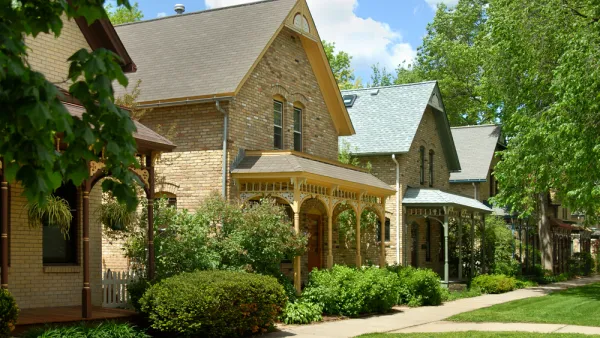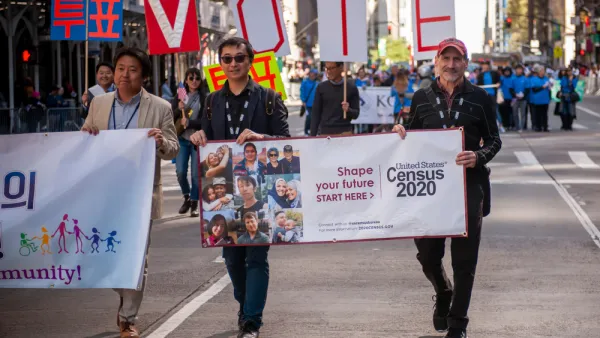New census data shows that America's cities continue to grow at a faster rate than their suburbs, sustaining the reversal of a decades-long trend.
"The nation’s 51 largest metropolitan areas — those with populations over one million — saw their city populations grow 1.12% between July 2011 and July 2012, up from 1.03% a year earlier and an average of 0.42% between 2000 and 2010, according to an analysis of Census data by demographer William Frey of the Brookings Institution in Washington," writes Neil Shah. "By contrast, these cities’ suburbs grew just 0.97% last year, higher than 2011’s 0.96% but far below the average of 1.38% in the previous decade."
"Census data last year showed this migration to the suburbs stalled in 2010-2011," he notes. "A combination of fewer moves out of cities and increases in population from births and immigration pushed up the overall growth rate of city populations beyond that of suburbs — something that hadn’t happened since the 1920s, by some measures. Now the trend appears to be getting entrenched."
“We would have expected this to change — and it hasn’t,” said Brookings’ Mr. Frey. “The question is, is this just a short-term effect, or something long-term?”
FULL STORY: U.S. Cities Growing Faster Than Suburbs

National Parks Layoffs Will Cause Communities to Lose Billions
Thousands of essential park workers were laid off this week, just before the busy spring break season.

Retro-silient?: America’s First “Eco-burb,” The Woodlands Turns 50
A master-planned community north of Houston offers lessons on green infrastructure and resilient design, but falls short of its founder’s lofty affordability and walkability goals.

Delivering for America Plan Will Downgrade Mail Service in at Least 49.5 Percent of Zip Codes
Republican and Democrat lawmakers criticize the plan for its disproportionate negative impact on rural communities.

Test News Post 1
This is a summary

Test News Headline 46
Test for the image on the front page.

Balancing Bombs and Butterflies: How the National Guard Protects a Rare Species
The National Guard at Fort Indiantown Gap uses GIS technology and land management strategies to balance military training with conservation efforts, ensuring the survival of the rare eastern regal fritillary butterfly.
Urban Design for Planners 1: Software Tools
This six-course series explores essential urban design concepts using open source software and equips planners with the tools they need to participate fully in the urban design process.
Planning for Universal Design
Learn the tools for implementing Universal Design in planning regulations.
EMC Planning Group, Inc.
Planetizen
Planetizen
Mpact (formerly Rail~Volution)
Great Falls Development Authority, Inc.
HUDs Office of Policy Development and Research
NYU Wagner Graduate School of Public Service





























